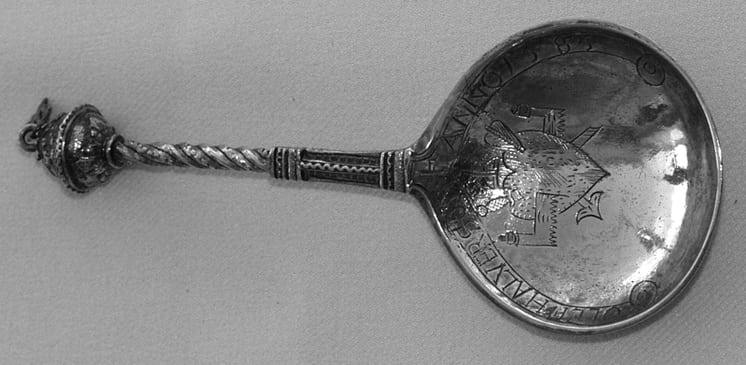Spoon
- Date 1585
- Place of Origin Flekkefjord, Norway
- Creator Harmen Boris
This is a fascinating example of a late Middle-Ages type of spoon. Spoons from this time period often bore saints’ marks, like the one of St. Augustine on this spoon. Spoons from this time period also typically had a band of writing in Gothic letters engraved around a nearly round bowl. Handles were rather short and sometimes twisted, with a cast crown, ball, or other shape at the end. This type of spoon was probably gripped by the whole hand. By the mid-1600s, spoons with flat and rather broad handles were popular, and made it possible for the spoon to be held as we do today.
The heart, pierced by a saw, sword, and arrow, incised on this spoon initially symbolized the martyrdom of St. Augustine, an early church father. Eventually the symbol came to mean the heart pierced by arrows of love.
Inscription: Anno 1585 Ole F. Halverson (incised in bowl) EMIT DVSSEN LEPEL WILETEN DE MOT GOT SINE HERE NICH VOR (incised outside of bowl) GETE OH (around shield on back of bowl)
The spoon was made by Harmen Boris, who was active in Bergen from 1583 to 1618. His maker’s mark is one of the earliest known in Norway.
It is believed that the spoon was brought to America by the donor’s husband’s family, who emigrated from Flekkefjord in the mid 1800s.
- Materials Silver
- Dimensions length: 5.625 inches; width: 2.25 inches
- Identifier / Source 1980.080.001 - Gift of Clara Asbjornson

